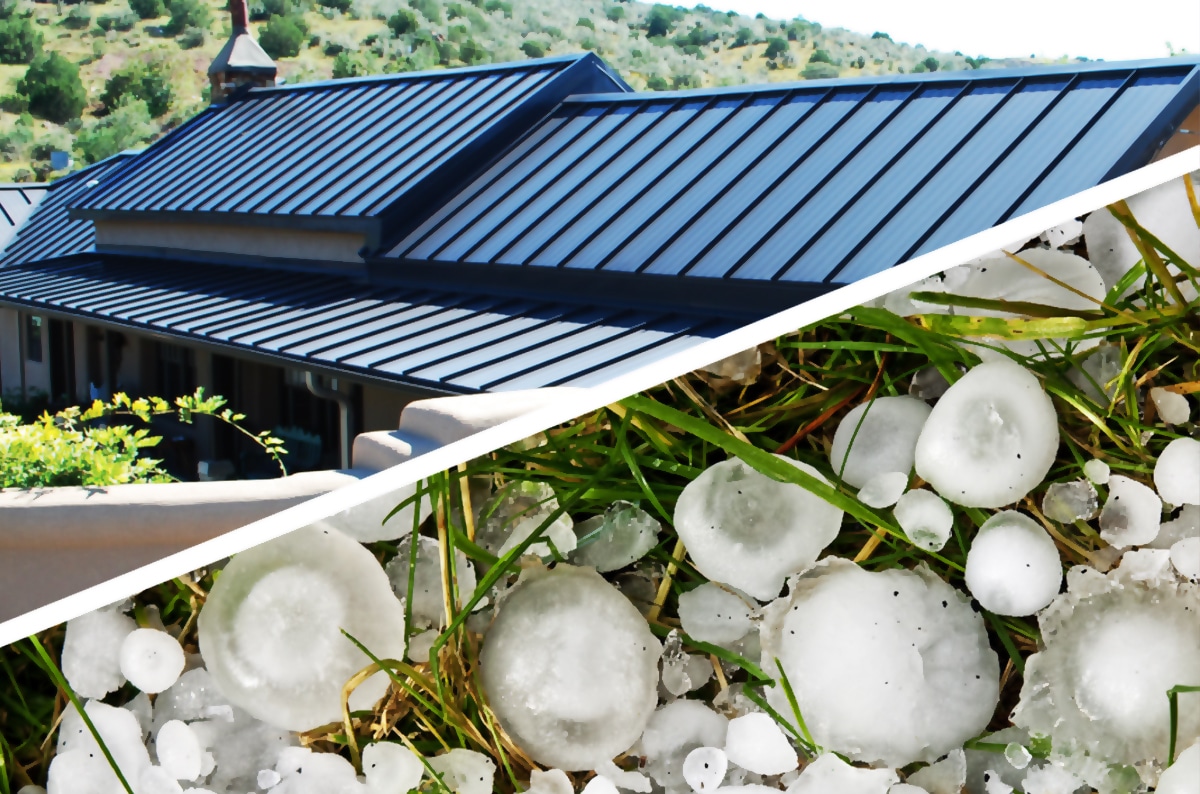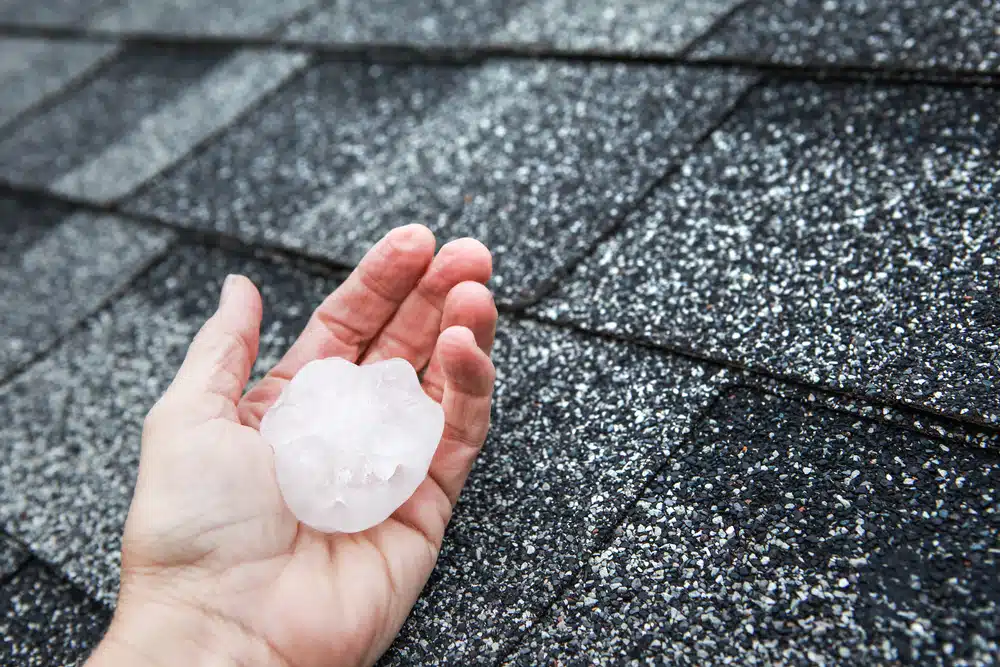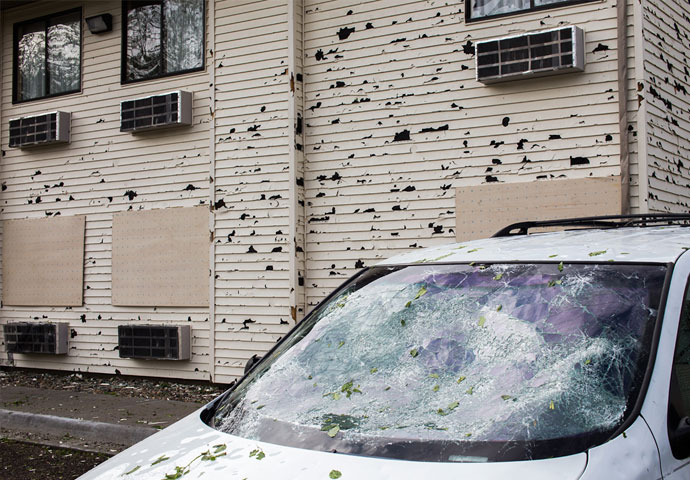
Why Is Hail Damage Dangerous for Your Home?
Hail damage can weaken your home’s defenses against future storms and cause water leaks or structural issues if not repaired quickly. Even small hailstones can damage roofing materials, dent siding, and break windows, leaving your home vulnerable to further weather damage. Ignoring hail damage can lead to long-term problems, including mold growth from water infiltration.
What to Do Immediately After a Hailstorm
Taking immediate action after a hailstorm is crucial to prevent further damage. Here are the expert-recommended steps you should follow:
| Step | Action |
|---|---|
| 1. Ensure Safety First | Before inspecting any damage, make sure it’s safe to go outside. Check for downed power lines or other hazards that might have occurred during the storm. Wait until the storm passes and it’s safe to assess the situation. |
| 2. Inspect for Visible Damage | Once it’s safe, check your home’s exterior for any signs of damage. Look for dents or cracks in the roof, siding, gutters, and windows. Pay special attention to areas where water might infiltrate, such as damaged shingles or window seals. |
| 3. Document the Damage | Take clear photos of any damage you see. Be thorough and take pictures from multiple angles to document the extent of the damage. This will be helpful when filing an insurance claim and ensuring proper repairs are made. |
| 4. Check for Leaks or Water Damage | Inspect your attic, ceilings, and walls for any signs of water damage or leaks. Water can seep into your home through hail-damaged roofs, causing mold growth and structural issues. If you spot any leaks, address them immediately to prevent further damage. |
| 5. Contact a Professional for an Inspection | Even if the damage appears minor, it’s important to have a professional inspect your home. Roofing and siding experts can spot hidden damage that might not be immediately visible. Hiring a professional will also provide you with a detailed assessment to share with your insurance company. |
How to File an Insurance Claim for Hail Damage

If your home has been damaged by hail, filing an insurance claim is an important step to cover the costs of repairs. Follow these steps to ensure a smooth process:
1. Review Your Insurance Policy
Before contacting your insurance company, take the time to review your homeowners’ insurance policy. Understand what types of hail damage are covered and whether you have a deductible for storm damage claims.
2. Contact Your Insurance Company
Once you’ve documented the damage, contact your insurance company to start the claims process. Be ready to provide details about the storm, the damage, and any immediate repairs you’ve made to prevent further issues. Your insurance company will likely send an adjuster to assess the damage.
3. Get Multiple Repair Estimates
It’s a good idea to get quotes from multiple contractors to repair the hail damage. Share these estimates with your insurance adjuster to ensure you’re getting fair compensation for the repairs.
4. Make Temporary Repairs
To prevent further damage while waiting for insurance approval, make temporary repairs to protect your home. Cover any broken windows, seal up leaks, and secure any loose or damaged materials. Keep receipts for any temporary repairs, as your insurance company may reimburse you for them.
For more information on filing insurance claims after storm damage, visit this guide from the National Association of Insurance Commissioners.
Preventing Future Hail Damage

While you can’t prevent a hailstorm, there are steps you can take to protect your home from future damage. By reinforcing vulnerable areas and making smart upgrades, you can minimize the impact of future storms.
1. Install Impact-Resistant Roofing
When it’s time to replace your roof, consider upgrading to impact-resistant roofing materials. These materials are designed to withstand hailstones and prevent cracks or dents. Metal roofing and Class 4 impact-resistant shingles are great options for hail-prone areas.
2. Upgrade Your Windows
Hail can easily shatter traditional windows, so upgrading to impact-resistant windows can protect your home. These windows are made with reinforced glass that can withstand hail and other storm debris.
3. Maintain Trees and Landscaping
Trim overhanging branches and remove dead trees that could fall on your home during a hailstorm. Properly maintained landscaping reduces the risk of falling debris causing additional damage.
FAQ
| Question | Answer |
|---|---|
| What should I do first after a hailstorm? | First, ensure it’s safe to go outside, then check your home for visible damage, take photos, and inspect for leaks. Contact a professional for a full inspection. |
| Will my homeowners insurance cover hail damage? | Most homeowners insurance policies cover hail damage, but it’s important to review your policy to understand your coverage and deductibles. |
| Can I make temporary repairs before my insurance claim is approved? | Yes, you should make temporary repairs to prevent further damage. Keep receipts for any work done, as you may be reimbursed by your insurance company. |
| What type of roof is best for preventing hail damage? | Impact-resistant roofing materials, such as metal roofing or Class 4 impact-resistant shingles, are highly recommended for hail-prone areas. |
| How do I know if my roof has hail damage? | Signs of hail damage include dents, cracks, or missing shingles. A professional roofer can inspect for damage that may not be visible from the ground. |
If you need help with storm damage repairs or mold prevention after a hailstorm, contact Citywide Mold Mitigation for expert restoration services and peace of mind.

